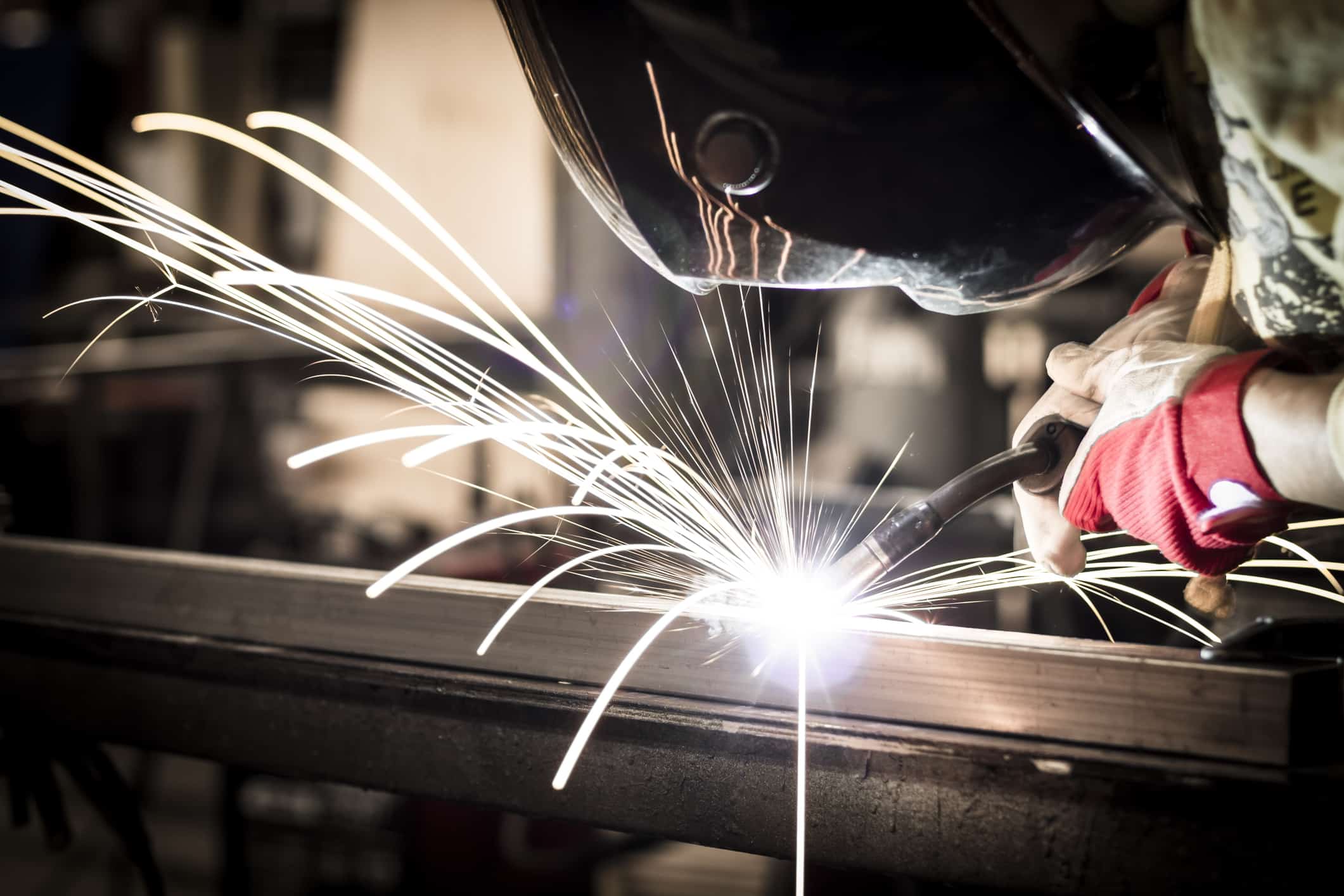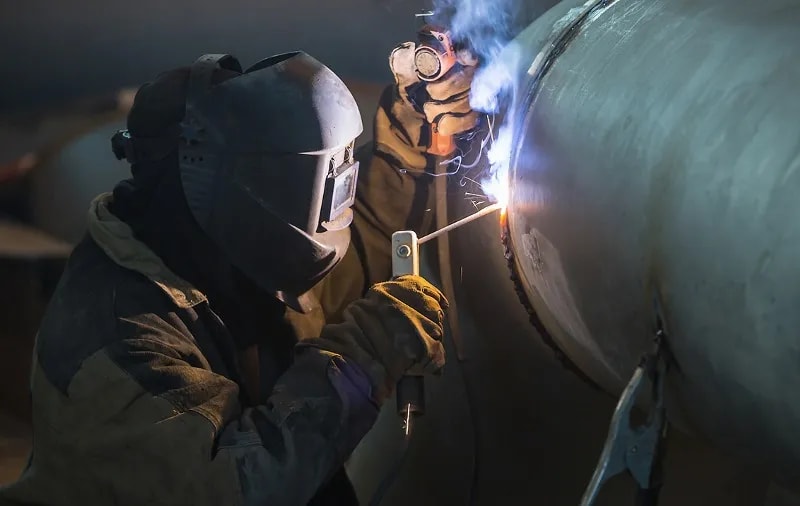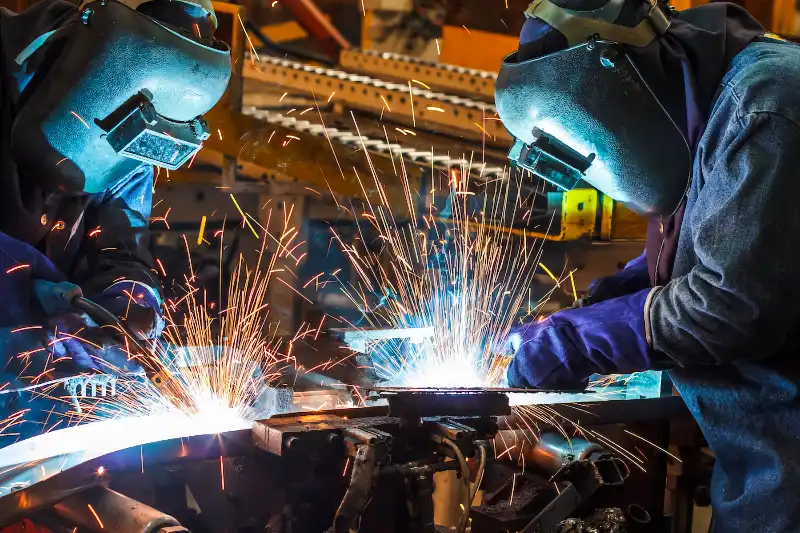Immediate responses to weld misalignment in Montana Mobile Welding and Repair Fabrication
Wiki Article
Usual Welding Repair Issues and Just How to Address Them Efficiently
Welding repair work usually experience a variety of issues that can threaten the honesty of the last product. Usual problems consist of inadequate penetration, porosity, and misalignment, to name a few. Each flaw offers unique obstacles that need particular techniques for resolution. Understanding these problems is necessary for welders intending to enhance their outcomes and abilities. This discussion will explore these usual welding fixing problems and reliable methods to resolve them.Inadequate Penetration
Poor penetration occurs when the weld metal falls short to fully fuse with the base product, resulting in weak joints and possible structural failures. This concern often comes from not enough warm input, inaccurate electrode angle, or inappropriate welding rate. Welders may experience poor penetration because of a miscalculation of the necessary parameters for a particular material thickness or kind. Additionally, contamination on the base product's surface can hinder efficient bonding, exacerbating the problem. To resolve poor penetration, welders should assure suitable settings on their equipment and maintain a clean job surface area. Regular inspection of welds is advised to identify any type of deficiencies early, permitting timely adjustments and the avoidance of jeopardized structural integrity in welded settings up.Porosity
Porosity is a common flaw in welded joints that materializes as little gas bubbles caught within the weld metal. This flaw can endanger the integrity of the weld, causing decreased toughness and prospective failure under anxiety. Welding. Porosity usually emerges from contamination, moisture, or improper welding methods, which enable gases to leave right into the liquified weld swimming pool. To resolve porosity, welders ought to guarantee correct surface prep work, maintain a tidy workplace, and make use of appropriate welding criteria. In addition, choosing the ideal filler material and shielding gas can reduce gas entrapment. Routine inspection and testing of welds can assist determine porosity early, ensuring prompt restorative actions are taken, consequently maintaining the high quality and dependability of the bonded structureImbalance
Imbalance in welding can emerge from numerous variables, consisting of inappropriate configuration and thermal development. Comprehending the source is vital for efficient resolution. Numerous correction methods are readily available to straighten elements and ensure structural integrity.Causes of Misalignment
Welding misalignment frequently originates from a selection of underlying concerns that can compromise structural stability. One primary reason is improper fit-up of parts before welding, which can lead to gaps and uneven surface areas. Variants in thermal growth throughout the welding procedure can additionally cause distortion, particularly if the materials being signed up with have various coefficients of development. Furthermore, inadequate fixturing and clamping might fail to hold elements firmly in position, bring about activity during welding. Improperly kept tools, consisting of welding machines and tools, may present disparities in the weld grain, additional adding to imbalance. Driver mistake, stemming from not enough training or experience, can also play a substantial duty in developing misaligned welds.
Modification Methods Offered
Resolving imbalance effectively needs a mix of corrective techniques customized to the certain concerns handy. One usual approach is using jigs or fixtures to hold parts in the appropriate setting during welding, ensuring constant placement. In addition, preheating the products can assist lower distortion and boost fit-up. For considerable imbalance, mechanical realignment methods, such as making use of hydraulic jacks or clamps, can be used to fix the position before welding. Post-weld heat therapy may also be necessary to ease anxieties brought on by imbalance. Lastly, mindful assessment and modification throughout the configuration phase can avoid misalignment concerns from becoming considerable issues, promoting a smoother welding process and improving general architectural stability.Distortion
Distortion is an usual obstacle in welding that can develop from various elements, consisting of irregular cooling and heating. Understanding the reasons for distortion is essential for applying effective avoidance techniques. Addressing this concern not only boosts structural integrity but also boosts the total quality of the weld.Sources of Distortion
When based on the intense warmth of welding, products typically go through modifications that can result in distortion. This phenomenon mostly develops from thermal growth and tightening throughout the welding procedure. As the weld location heats up, the material increases; upon cooling, it gets, which can develop interior anxieties. Furthermore, uneven heating across a workpiece can intensify these stress and anxieties, resulting in warping or bending. The sort of product likewise plays a considerable duty; steels with varying thermal conductivity and coefficients of expansion might react in a different way, bring about unforeseeable distortions. Bad joint layout and poor fixturing can add to imbalance during welding, enhancing the probability of distortion. Understanding these reasons is necessary for efficient welding repair work and avoidance methods.Avoidance Techniques
Effective prevention methods for distortion throughout welding emphasis on controlling warm input and guaranteeing correct joint design. Maintaining a consistent heat input helps to lessen thermal expansion and tightening, which can bring about distortion. Using methods such as preheating the work surface can also minimize the temperature slope, advertising uniform heating. In addition, selecting proper joint designs, such as T-joints or lap joints, can boost security and reduce anxiety concentrations. Applying correct fixturing to safeguard the work surfaces in position even more aids in keeping alignment during the welding process. Finally, staggered welding series can disperse heat extra evenly, preventing local distortion. By applying these strategies, welders can substantially decrease the possibility of distortion and enhance the general top quality of their welds.Splitting
Breaking is a typical issue encountered in welding fixings, often resulting from numerous factors such as inappropriate air conditioning prices, material option, or insufficient joint prep work. The occurrence of cracks can considerably endanger the stability of the weld, bring about potential failings throughout operation. To resolve this concern, welders must first examine the root causes, making sure that materials are suitable and properly chosen for the particular application. Furthermore, managing the air conditioning price during the welding process is vital; rapid cooling can generate anxiety and lead to cracking. Proper joint design and prep work additionally add to decreasing the threat. Carrying out these methods can boost weld high quality and durability, eventually minimizing the chance of breaking in completed weldments.
Insufficient Fusion
A significant concern in welding repair services is insufficient combination, which happens when the weld metal does not adequately bond with the base material or previous weld passes - Belgrade Welding. This problem can lead to weaknesses in the joint, possibly endangering the honesty of the welded framework. Aspects adding to insufficient combination consist of inadequate warmth input, incorrect welding strategy, and contamination of the surfaces being joined. To address this issue efficiently, welders need to ensure appropriate pre-weld cleansing and surface area prep work, along with change their welding specifications to achieve ample penetration and fusion. Routine examination throughout the welding process can also assist recognize insufficient fusion early, permitting timely restorative procedures to enhance the total quality of the weldWelding
Overheating
While welding repair work can improve structural honesty, overheating presents a significant difficulty that can result in product destruction. Extreme warmth during welding can modify the mechanical homes of metals, resulting in decreased strength, enhanced brittleness, and bending. This phenomenon is particularly essential in high-stress applications where structural integrity is paramount. Determining overheating can include aesthetic inspections for discoloration or distortion, along with monitoring temperature throughout the welding procedure. To alleviate the risks related to getting too hot, welders should employ ideal methods, such as controlling warm input, readjusting travel rate, and using ideal filler products. In addition, carrying out pre- and post-weld warmth treatments can help restore product properties and boost the overall high quality of the repair service, making sure long-term performance and security.Regularly Asked Questions
What Are the Typical Indicators of a Welding Flaw?

Exactly How Can I Examine My Welds for Top quality?
To examine welds for high quality, one can utilize visual inspections, ultrasonic screening, and radiographic approaches. Each technique ensures architectural honesty, determines issues, and verifies adherence to specified criteria, ultimately enhancing the reliability of the welded joints.What Safety Preventative Measures Should I Take While Welding?
When welding, one need to focus on safety by putting on suitable personal safety tools, ensuring proper air flow, protecting flammable products away, keeping a clean office, and recognizing surroundings to stop injuries and crashes.Can I Fix a Weld Without Renovating the Entire Joint?
Fixing a weld without redesigning the whole joint is possible, depending on the damage (Montana Mobile Welding and Repair Welding). Techniques such as grinding, including filler product, or using a welding procedure can successfully resolve details defects while maintaining the surrounding structureWhat Devices Are Necessary for Efficient Welding Repairs?
Crucial devices for reliable welding repairs consist of a welding maker, cable brush, grinder, safety gear, clamps, and filler products. Each device plays an essential role in guaranteeing quality and safety during the repair procedure. Porosity typically occurs from contamination, dampness, or improper welding techniques, which enable gases to leave right into the liquified weld swimming pool. Improperly maintained equipment, including welding makers and tools, might present disparities in the weld bead, more adding to imbalance. When subjected to the intense warmth of welding, products typically undertake modifications that can lead to distortion. Fracturing is a common problem come across in welding repair services, frequently resulting from different variables such as inappropriate air conditioning prices, material selection, or poor joint prep work. A considerable problem in welding fixings is insufficient fusion, which happens when the weld steel does not appropriately bond with the base product or previous weld passes.Report this wiki page